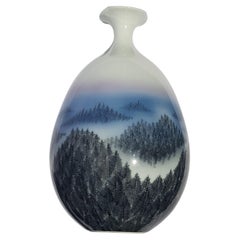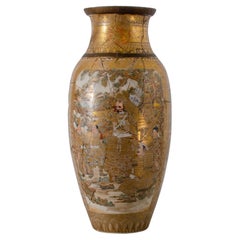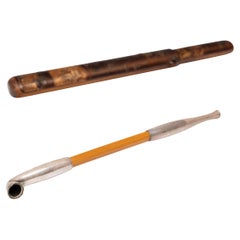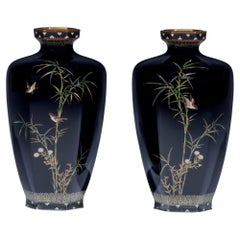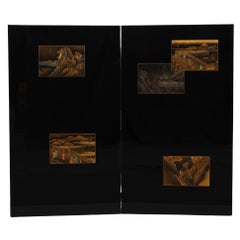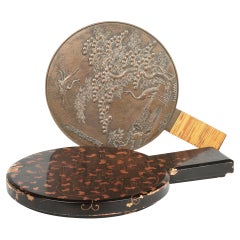Japanese Asian Art and Furniture
Late 20th Century Showa Japanese Asian Art and Furniture
Porcelain
Late 19th Century Meiji Antique Japanese Asian Art and Furniture
Ceramic
Early 20th Century Meiji Japanese Asian Art and Furniture
Brass
Early 20th Century Japanese Asian Art and Furniture
Enamel
Late 20th Century Japanese Asian Art and Furniture
Wood, Giltwood, Lacquer
1870s Meiji Antique Japanese Asian Art and Furniture
Bronze
Early 20th Century Japonisme Japanese Asian Art and Furniture
Bronze
20th Century Japanese Asian Art and Furniture
Paper
Late 20th Century Showa Japanese Asian Art and Furniture
Porcelain
21st Century and Contemporary Japanese Asian Art and Furniture
Porcelain
20th Century Japanese Asian Art and Furniture
Paper
Early 19th Century Edo Antique Japanese Asian Art and Furniture
Silk
Late 19th Century Meiji Antique Japanese Asian Art and Furniture
Ceramic, Earthenware, Pottery
Early 20th Century Taisho Japanese Asian Art and Furniture
Burl
Mid-18th Century Edo Antique Japanese Asian Art and Furniture
Gold Leaf
Mid-19th Century Meiji Antique Japanese Asian Art and Furniture
Porcelain
18th Century Edo Antique Japanese Asian Art and Furniture
Wood, Paper
Early 19th Century Antique Japanese Asian Art and Furniture
Paper
1960s Showa Vintage Japanese Asian Art and Furniture
Wood, Lacquer
Early 20th Century Meiji Japanese Asian Art and Furniture
Wood
Early 19th Century Antique Japanese Asian Art and Furniture
Gold Leaf, Silver Leaf
1950s Showa Vintage Japanese Asian Art and Furniture
Glass, Wood, Paper
Mid-19th Century Edo Antique Japanese Asian Art and Furniture
Cedar
16th Century Edo Antique Japanese Asian Art and Furniture
Lacquer, Abalone
Mid-19th Century Edo Antique Japanese Asian Art and Furniture
Gold Leaf
1930s Showa Vintage Japanese Asian Art and Furniture
Wood, Paper
19th Century Antique Japanese Asian Art and Furniture
Paper
1960s Showa Vintage Japanese Asian Art and Furniture
Glass, Wood, Paper
21st Century and Contemporary Organic Modern Japanese Asian Art and Furniture
Bamboo, Rattan
Early 20th Century Taisho Japanese Asian Art and Furniture
Porcelain
Mid-20th Century Japanese Asian Art and Furniture
Wood
Early 20th Century Meiji Japanese Asian Art and Furniture
Silver
1920s Showa Vintage Japanese Asian Art and Furniture
Brass
Mid-19th Century Edo Antique Japanese Asian Art and Furniture
Wood, Paper
19th Century Meiji Antique Japanese Asian Art and Furniture
Bronze
1960s Showa Vintage Japanese Asian Art and Furniture
Paper
19th Century Meiji Antique Japanese Asian Art and Furniture
Porcelain
1890s Meiji Antique Japanese Asian Art and Furniture
Wood, Lacquer
20th Century Showa Japanese Asian Art and Furniture
Brass
Early 1900s Meiji Antique Japanese Asian Art and Furniture
Silk, Lacquer
19th Century Antique Japanese Asian Art and Furniture
Amethyst
Late 20th Century Showa Japanese Asian Art and Furniture
Silk
Early 20th Century Meiji Japanese Asian Art and Furniture
Pottery
20th Century Showa Japanese Asian Art and Furniture
Wood
20th Century Japanese Asian Art and Furniture
Paper
Early 20th Century Meiji Japanese Asian Art and Furniture
Bamboo, Wood
Late 19th Century Meiji Antique Japanese Asian Art and Furniture
Enamel, Copper
19th Century Meiji Antique Japanese Asian Art and Furniture
Enamel
Late 19th Century Meiji Antique Japanese Asian Art and Furniture
Enamel, Bronze
Early 20th Century Japanese Asian Art and Furniture
Bronze
Late 20th Century Showa Japanese Asian Art and Furniture
Porcelain
19th Century Antique Japanese Asian Art and Furniture
Coral
Late 19th Century Meiji Antique Japanese Asian Art and Furniture
Copper, Enamel
19th Century Edo Antique Japanese Asian Art and Furniture
Bronze
19th Century Meiji Antique Japanese Asian Art and Furniture
Ceramic
15th Century and Earlier Other Antique Japanese Asian Art and Furniture
Pottery
Early 20th Century Meiji Japanese Asian Art and Furniture
Wood
19th Century Edo Antique Japanese Asian Art and Furniture
Gold Leaf
Early 1900s Meiji Antique Japanese Asian Art and Furniture
Silver Leaf
1960s Mid-Century Modern Vintage Japanese Asian Art and Furniture
Teak, Plywood
Read More
Symbols of Happiness and Rebirth Adorn This Japanese Satsuma Bowl
Decorated with white cranes and the sought-after thousand-butterflies motif, the Meiji-period vessel offers both a celebration of traditional aesthetics and a clear reflection of the era’s appetite for exquisite export pieces.
Chicago’s Pagoda Red Has a Spirited Mix of Asian Antiques and Bold New Art
For 25 years, gallerist Betsy Nathan has leveraged her keen eye and key connections to bring a unique selection of rare finds to the market.
In L.A., Gallerist JF Chen Has Long Championed Eclectic Blue-Chip Design
Now working alongside his daughter Bianca, dealer Joel Chen has presented a most covetable array of antiques, art and contemporary creations for more than 40 years.
12 Calming Spaces Inspired by Japanese Design
From cherry-blossom-adorned walls paired with glamorous lighting to wood-paneled ceilings above checkerboard-patterned chairs, these 12 spaces seamlessly blend Eastern and Western aesthetics.
Rodrigo Rivero Lake’s Mexico City Showroom Is a Museum-Worthy Trove of Spanish Colonial and Asian Antiques
The dealer and curator has spent the past 50 years amassing a collection of exceptional art, furniture and architectural elements that trace the cultural influence of the Spanish empire from Europe to the Americas and beyond.
16 Refined Asian-Inspired Interiors
These spaces exemplify how Eastern elements elevate a home's decor.
